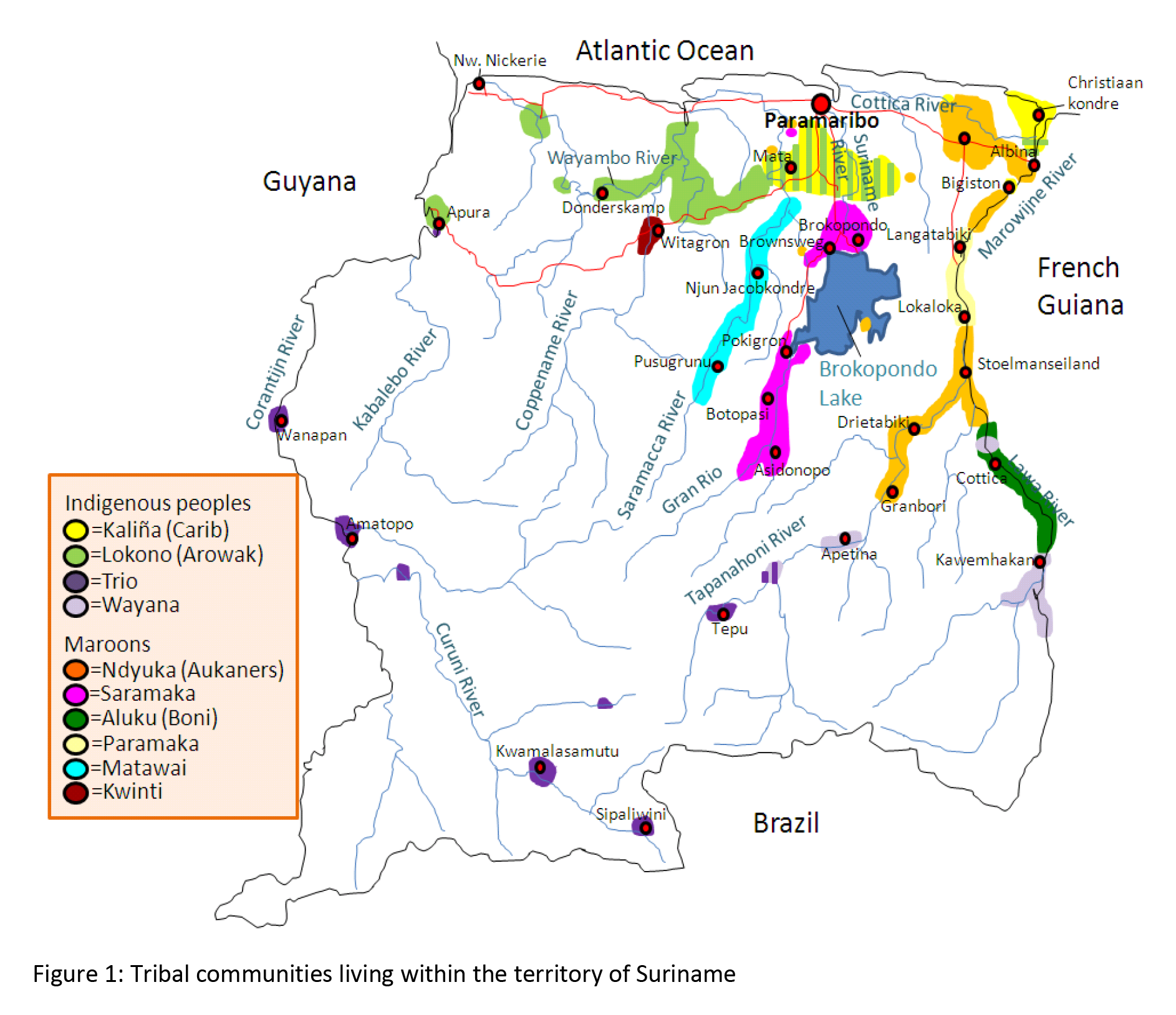Bushinengue on:
[Wikipedia]
[Google]
[Amazon]
Surinamese Maroons (also Marrons, Businenge or Bushinengue, meaning ''black people of the forest'') are the descendants of enslaved Africans that escaped from the plantations and settled in the inland of 

 The traditional Surinamese Maroon religion is called
The traditional Surinamese Maroon religion is called
Suriname
Suriname, officially the Republic of Suriname, is a country in northern South America, also considered as part of the Caribbean and the West Indies. It is a developing country with a Human Development Index, high level of human development; i ...
. The Surinamese Maroon
Maroon ( , ) is a brownish crimson color that takes its name from the French word , meaning chestnut. ''Marron'' is also one of the French translations for "brown".
Terms describing interchangeable shades, with overlapping RGB ranges, inc ...
culture is one of the best-preserved pieces of cultural heritage outside of Africa
Africa is the world's second-largest and second-most populous continent after Asia. At about 30.3 million km2 (11.7 million square miles) including adjacent islands, it covers 20% of Earth's land area and 6% of its total surfac ...
. Colonial warfare, land grabs, natural disasters and migration have marked Maroon history. In Suriname six Maroon groups — or tribes — can be distinguished from each other. They themselves form a subgroup of the Afro-Surinamese
Afro-Surinamese are the inhabitants of Suriname of mostly West African and Central African ancestry. They are descended from enslaved Africans brought to work on sugar plantations. Many of them escaped the plantations and formed independent sett ...
.

Demographics
There are six major groups of Surinamese Maroons,Cf. ''Langues de Guyane'', sous la direction de Odile RENAULT-LESCURE et Laurence GOURY, Montpellier, IRD, 2009. who settled along different river banks: * Aluku (or Boni) at the Commewijne River laterMarowijne River
The Maroni () or Marowijne (; ) is a river in South America that forms the border between French Guiana and Suriname.
Course
The Maroni runs through the Guianan moist forests ecoregion.
It originates in the Tumuk Humak Mountains and forms ...
,
* Kwinti at the Coppename River,
* Matawai at the Saramacca River
Saramacca River is a river in Suriname. The Arawaks named this river "Surama", and today's name "Saramacca" is probably derived from it. It originates in the Wilhelmina Mountains and flows northwards and enters the Atlantic Ocean together with t ...
,
* Ndyuka (or Aukan) at the Marowijne and Commewijne Rivers
* Paamaka (Paramaccan) at the Marowijne River
* Saamaka (Saramaccan) at the Suriname River
Distribution

Language
The sources of the Surinamese Maroon vocabulary are theEnglish language
English is a West Germanic language that developed in early medieval England and has since become a English as a lingua franca, global lingua franca. The namesake of the language is the Angles (tribe), Angles, one of the Germanic peoples th ...
, Portuguese, some Dutch and a variety of African languages
The number of languages natively spoken in Africa is variously estimated (depending on the delineation of language vs. dialect) at between 1,250 and 2,100, and by some counts at over 3,000. Nigeria alone has over 500 languages (according to SI ...
. Between 5% and 20% of the vocabulary is of African origin. Its phonology is closest to that of African languages. The Surinamese Maroons have developed a system of meaning-distinctive intonation, as is common in Africa.
Religion
 The traditional Surinamese Maroon religion is called
The traditional Surinamese Maroon religion is called Winti
Winti is an Afro-Surinamese traditional religion that originated in Suriname. It is a syncretization of the different African religious beliefs and practices brought in mainly by enslaved Akan, Fon and Kongo people during the Dutch slave tra ...
. It is a syncretization of different African religious beliefs and practices brought in mainly by the Akan and Fon enslaved peoples. Winti is typical for Suriname, where it originated. The religion has a pantheon of spirits called ''Winti''. Ancestor veneration
The veneration of the dead, including one's ancestors, is based on love and respect for the deceased. In some cultures, it is related to beliefs that the dead have a continued existence, and may possess the ability to influence the fortune of t ...
is central. It has no written sources, nor a central authority. Practising Winti was forbidden by law for nearly one hundred years. Since the 1970s, many Maroons have moved to urban areas and have become evangelical. After the turn of the millennium Winti gained momentum. It is becoming more popular, especially in the Maroon diaspora.
See also
* Demographics of Suriname * Slavery in SurinameReferences
Further reading
* * * ** * * * * * * ** * * {{Maroons Social history of Suriname Ethnic groups in Suriname Maroons (people)